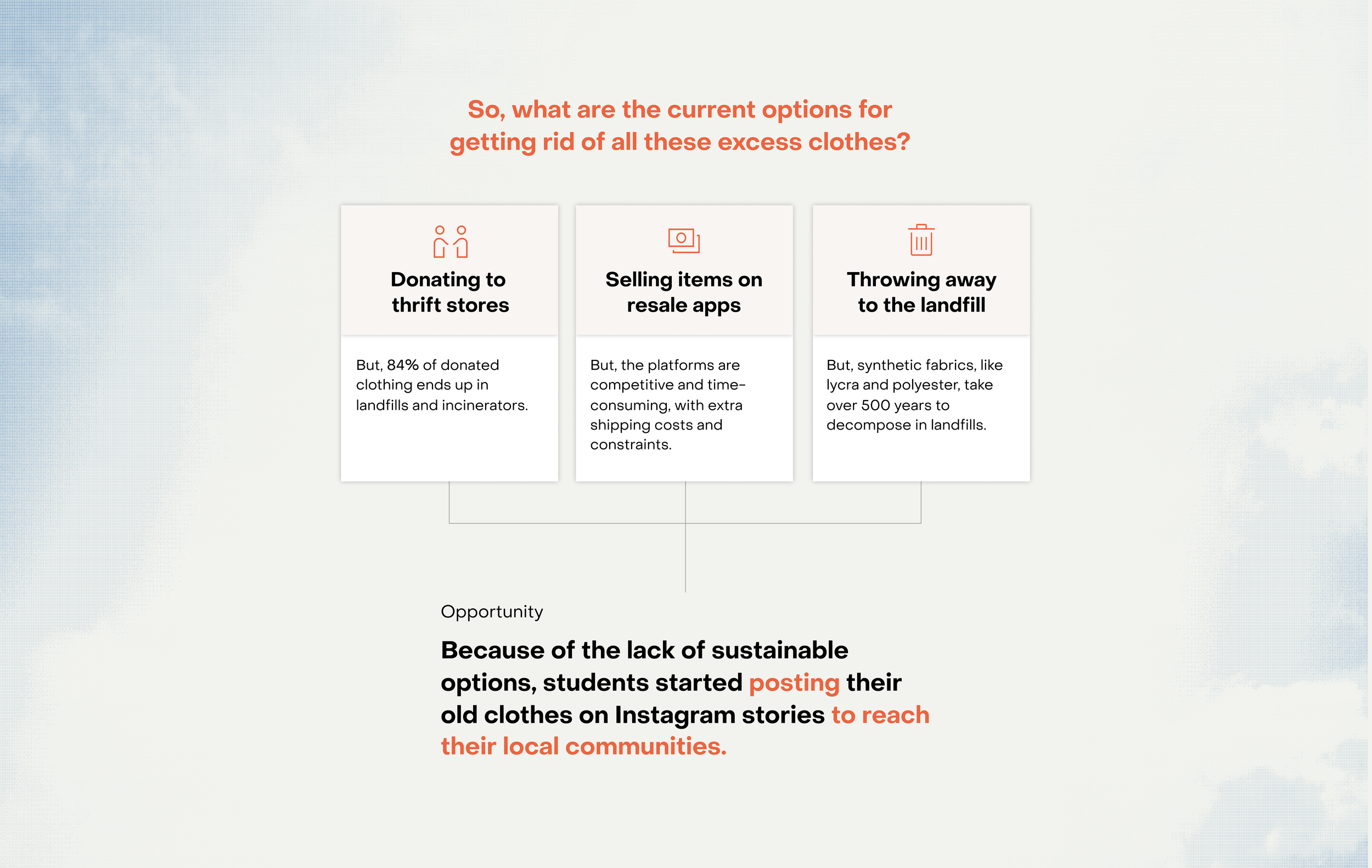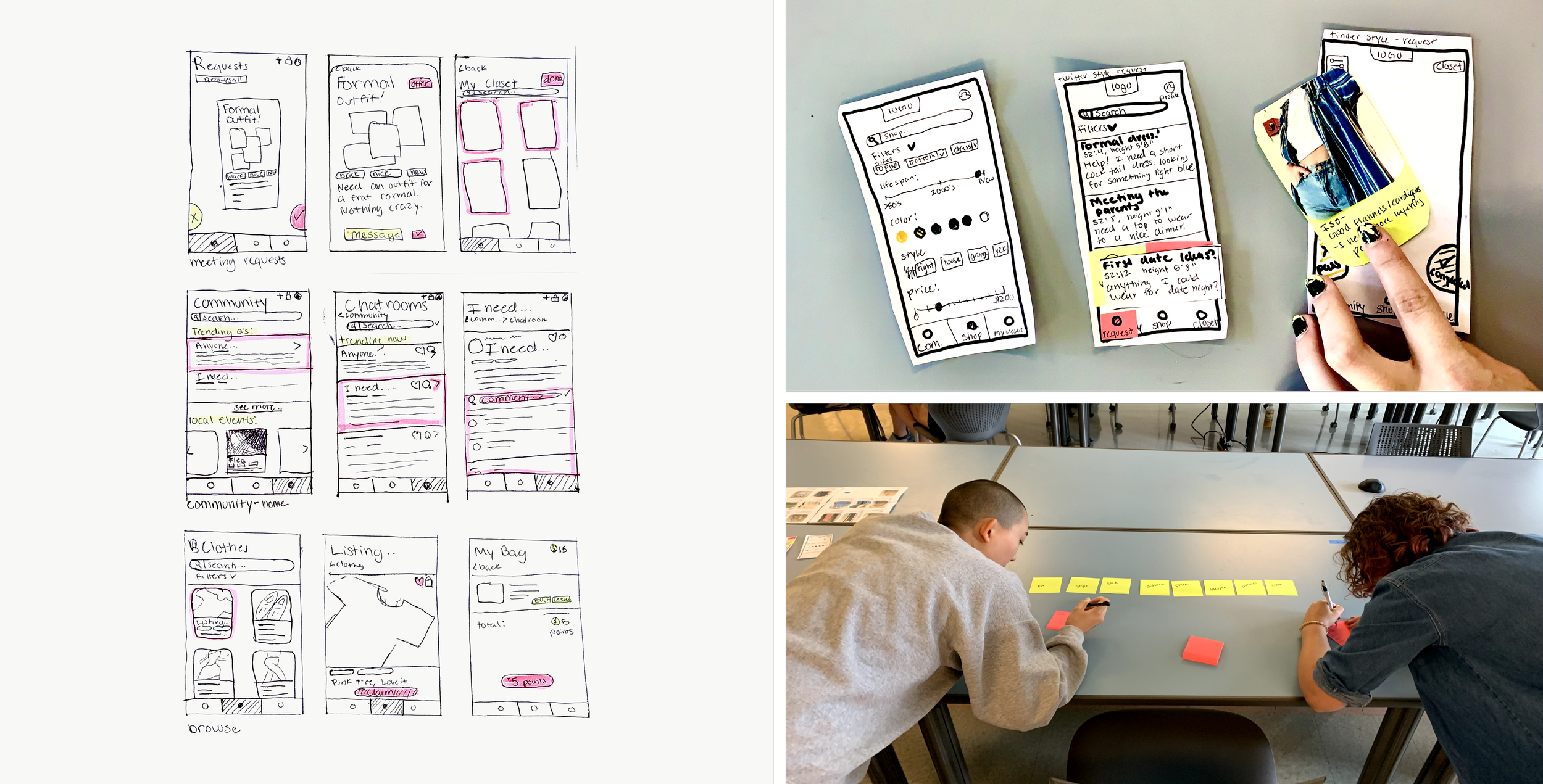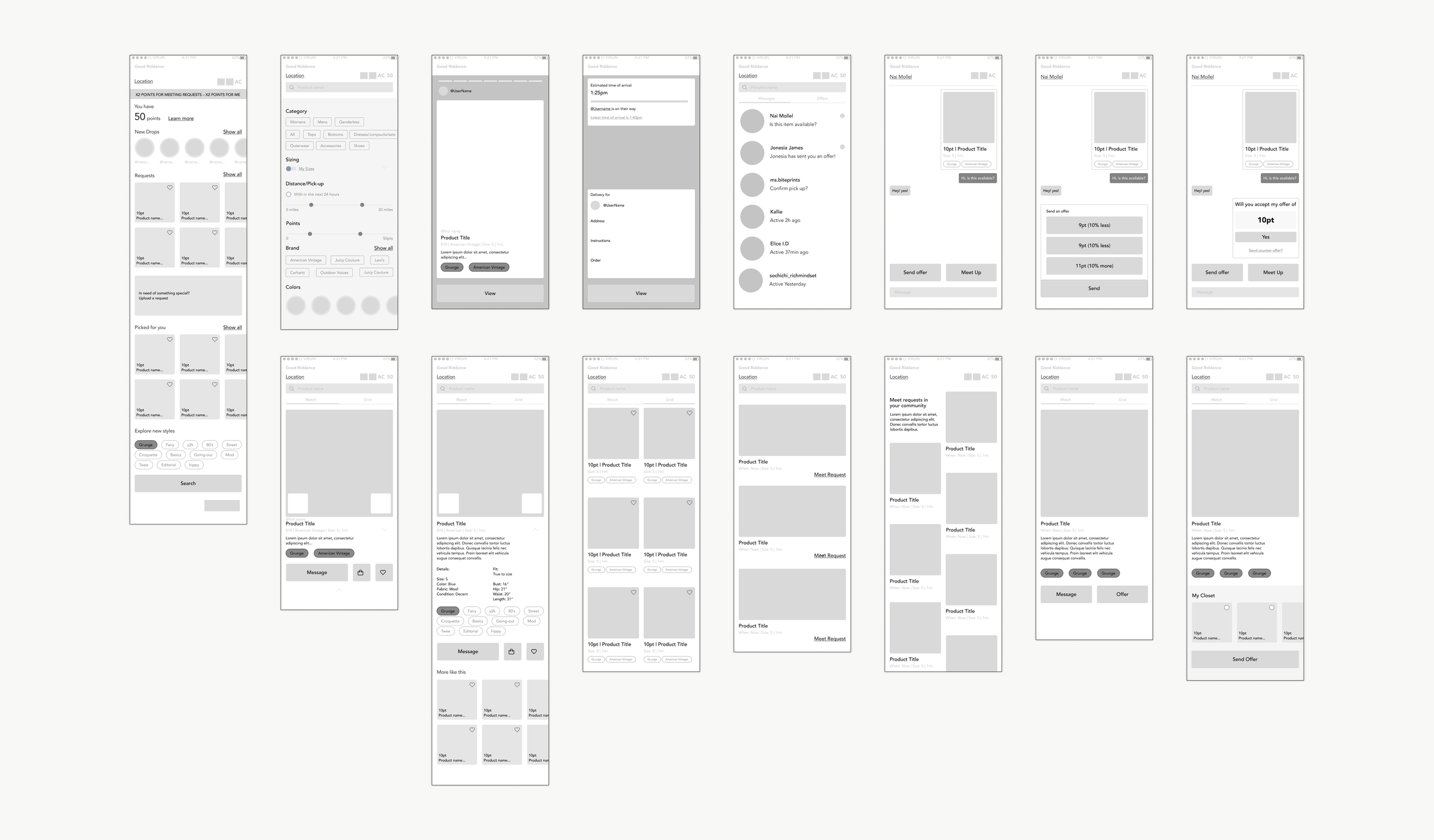
Good Riddance
UX/UI Casestudy
Although Gen Z is the generation that prioritizes sustainability the most, college students often turn to fast fashion retailers for their convenience and affordability. As a result, they tend to cycle through clothing rapidly due to their constant desire for novelty despite already owning an abundance of excess clothing. I dedicated my senior capstone at the University of Cincinnati to finding ways to transform the digital fashion retail space to promote and accommodate purchasing habits that recycled used garments around college campuses.
Good Riddance is an app that brings the clothing trade to the local level, making it easier for students to access new-to-them garments at their convenience. This platform connects them with like-minded individuals who care about the environmental impact of their purchasing habits. Moreover, the app offers an alternative currency, which challenges the increasing prices of second-hand markets. Users can earn “Goodie Bucks” by completing trades, which can be used to claim items listed in the community. By assigning value to preloved clothing, users can update their wardrobes without contributing to waste.


The Problem
Gen Z is the generation most focused on sustainability, yet for college students, fast fashion retailers have become the most convenient and affordable way to shop. Now, students are cycling through clothing faster than ever because of their constant desire for newness despite already having mounds of excess clothing.
How might we create a space for college students to exchange secondhand clothing locally to combat the reliance on fast fashion retailers?
The Solution
Good Riddance is an app that brings the clothing trade to the local level, making it easier for students to access preloved garments at their convenience. This platform connects them with like minded individuals who care about the environmental impact of their purchasing habits. Moreover, the app offers an alternative currency, which challenges the increasing prices of second hand markets. Users can earn “Goodie Bucks” by completing trades, which can be used to claim items listed in the community. By assigning value to preloved clothing, users can update their wardrobes without contributing to waste.
A Trustworthy
Community, Localized
to College Campuses
To join the community, shoppers enter their university information and verify their account with their school email. This will enable them to onboard to the app safely and start trading with local students.
Shop Item Listings to
Browse Items Requested
by the Community
Check out the "listing" tab to browse through preloved items, or look at the "community" section to see what garments people need. Neighbors can lend a hand by offering items other members seek.
Stay Updated on Following’s New Posts Through Stories
Be the first to know about flash sales, store news, and community engagement by engaging with stories. This feature is crafted to build trust with our valued customers and encourage repeat visits, resulting in more purchases from reliable sellers.
Introducing The Swipe To Secondhand Retail
By introducing the swipe feature to browsing requests, posts, and new uploads, shopping has become more enjoyable as it gamifies the experience.
Offer Up Items to Meet Neighbors Requests and Earn More
Shoppers can fulfill community requests by offering items from their closets that match the requested item details. Users earn "Goodie Bucks" to spend on future trades by meeting these requests.
Message Users and
Set Up Trade Details
To complete a trade, users are prompted to fill out an offer card. This streamlines negotiations on pricing, pickup location, and the transaction date and time. Both parties must accept the trade details to move forward with the exchange.
Meet Up and Scan to Earn Goodie Bucks
In order to complete the transaction, the seller needs to scan the buyer's Goodie Buck card to ensure a secure and successful exchange.
The Challenges
One of the biggest challenges was interpreting the user points. After hearing specific notes like "I can't always shift items that are specific size" and "I need formal/themed items quickly for events, but I never wear them again," I felt stuck approaching the solutions. The idea of peer-to-peer renting caught my attention, as students only need to use most of their clothing temporarily. There was also a gap in rental clothing; rentals were not affordable for the student demographic.
This conflict between creating a renting app versus a resale app stumped me until I ran an exercise asking students to go through the steps of uploading an item to rent from their clothes versus an item to sell. I found that no one owned anything nice enough to rent out, and if they did, they were too scared to hand it out. This gave us a launching pad, diving deeper into the resale app but prioritizing a function allowing users to request specific garments from their community.














